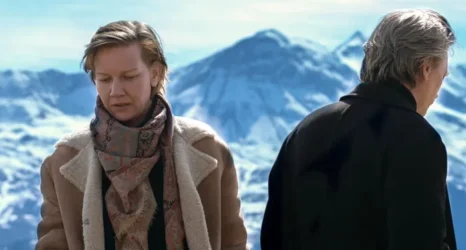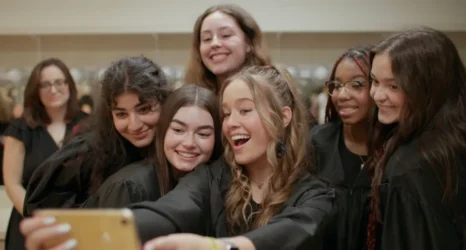In 2019, a study found that women made up only 34 percent of all film reviewers. One century before, in 1919, Pauline Kael, the female movie critic at The New Yorker from 1968 to 1991 who is also considered one of the leading film critics of all time, was born.
Kael finally takes to the screen herself in Rob Garver’s WHAT SHE SAID: THE ART OF PAULINE KAEL, which chronicles her long career and many controversies.
The legendary critic was a pioneer—not only in the male-dominated field of film criticism itself, but in the form her criticism took. Kael was “a woman who made an art of having an opinion,” as noted in Michelle Dean’s book, Sharp. Her film criticism, like essays or short stories, are literary works in their own right.
What She Said captures the most important decades of Kael’s career—including her decisions to champion Hollywood films like Bonnie and Clyde, Nashville, Carrie and Taxi Driver and pan big hits like The Sound of Music, Midnight Cowboy and Dirty Harry. Her commentaries weave a cultural history of their own throughout, providing rich documentation of what Americans saw at the movies in the decades after World War II and during Vietnam, when she had risen to prominence.
Kael’s movie reviews evoked loud outcries: Rather than just give a thumbs up or down on a film or the equivalent of an advertising promo, she would express strong opinions. You could like her opinion or not—either way, she made you want to see the movie so you could argue with her.
Kael’s first encounter with movies was in the 1930s, when women were portrayed as tough wisecracking dames—and she herself was a gutsy and fearless woman who insisted on “charging into the boy’s club.” Yet some of her opinions were even controversial to feminists. She championed Last Tango in Paris, for example, in which an actor was forced to let Brando sodomize her. Some of Kael’s favorite directors are known for not treating actresses well, and some of the films she lauded have not stood the test of time. But there was never a question of Kael’s fire and passion for the art that was her life’s work.
Fellow critics—including Molly Haskell, Camille Paglia and Renata Adler—weigh in on Kael’s legacy in What She Said, which also features Kael’s own words. Text interviews, letters and other writings are voiced by Sarah Jessica Parker; archival footage of home movies and clips of her radio and television appearances bring her even further to life.
These days, many lament that everyone can be a critic. But still there is a shortage of female ones. Like many who are not only movie fans but fans of Kael’s commentary, I started reading her in The New Yorker before I even knew there were film critics, and I have returned over the years to re-read her reviews in one of her 13 books or online. There could be nothing more fitting than a movie to tell her own story—the very medium which made her life’s work possible.
The only downside, of course, is that Kael isn’t here to critique it.
WHAT SHE SAID opens in on December 13th at the Nuart in Los Angeles and on December 25th at Film Forum in NYC before a national release.





